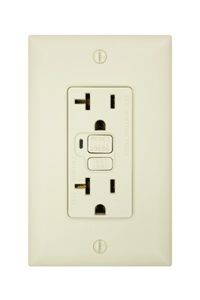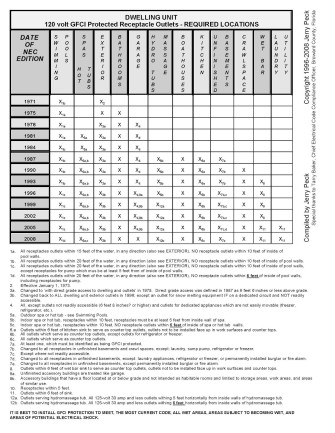Do You Need to Update Your GFCI Outlets?
 That outlet is called a ground-fault circuit interrupter (GFCI). It’s there to protect YOU from electrical shock!
That outlet is called a ground-fault circuit interrupter (GFCI). It’s there to protect YOU from electrical shock!
When you look at a normal 120-volt outlet in the United States, there are two vertical slots and then a round hole centered below them. The left slot is slightly larger than the right. The left slot is called “neutral,” the right slot is called “hot” and the hole below them is called “ground.” If an appliance is working properly, all electricity that the appliance uses will flow from hot to neutral. A GFCI monitors the amount of current flowing from hot to neutral. If there is any imbalance, it trips the circuit. It is able to sense a mismatch as small as 4 or 5 milliamps, and it can react as quickly as one-thirtieth of a second.
So let’s say you are outside with your power drill and it is raining. You are standing on the ground, and since the drill is wet there is a path from the hot wire inside the drill through you to the ground. If electricity flows from hot to ground through you, it could be fatal. The GFCI can sense the current flowing through you because not all of the current is flowing from hot to neutral as it expects — some of it is flowing through you to ground. As soon as the GFCI senses that, it trips the circuit and cuts off the electricity. Hey, we just avoided a disaster!
Did you know that kitchens updated after 1987 must have GFCIs installed? The chart to the right shows when GFCIs are required, so when it is time to sell your home, you will not have to pay for unnecessary updates! Just simply click on the chart to expand.

